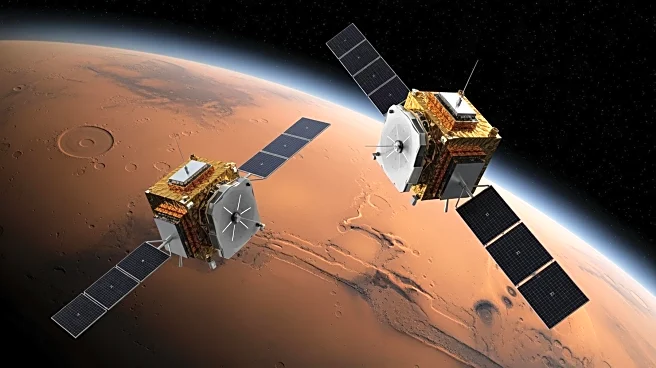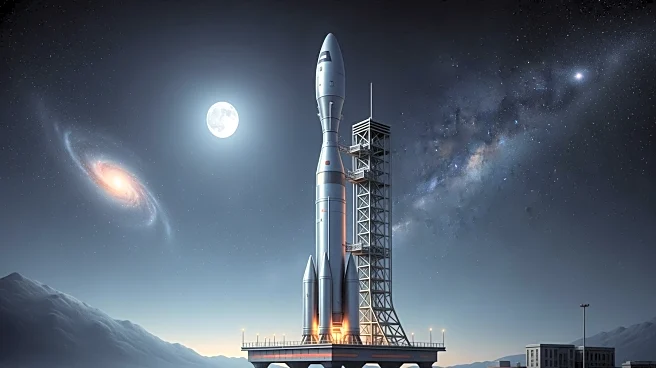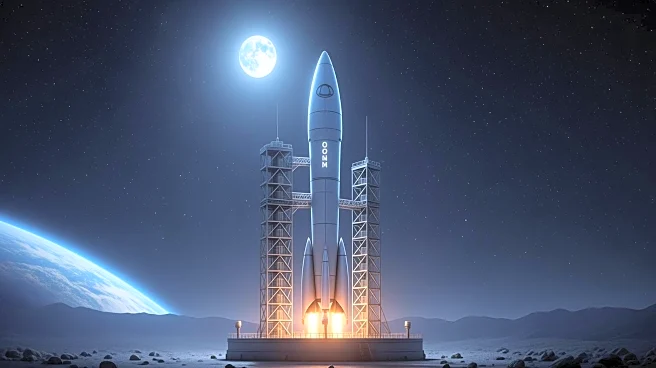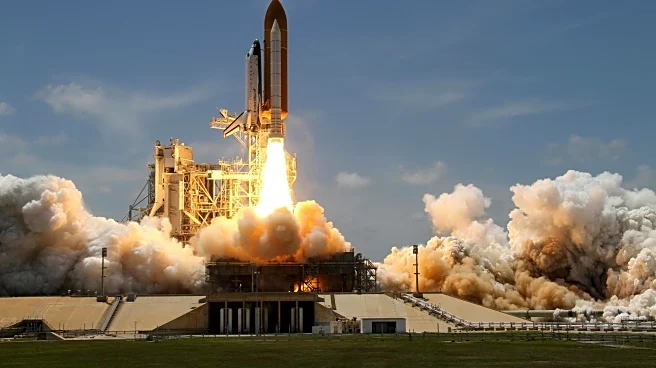What's Happening?
NASA is set to launch the Escapade mission, a collaborative effort with UC Berkeley and Blue Origin, to study the Martian atmosphere. Scheduled for November 9, the mission will deploy two orbiters, named
Blue and Gold, using Blue Origin's New Glenn rocket. These orbiters will initially remain at the L2 Earth-Sun Lagrange point for a year before heading to Mars, with an expected arrival by November 2027. The mission aims to provide insights into the Martian magnetosphere, which has been eroded by solar winds over time. The Escapade mission is part of NASA's Small Innovative Missions for Planetary Exploration (SIMPLEx) program, with a budget of less than $80 million, making it one of the least expensive Mars missions.
Why It's Important?
The Escapade mission is significant for several reasons. It marks Blue Origin's first official mission into space, potentially positioning the company alongside SpaceX as a provider of reusable space launch vehicles. This could lead to reduced costs and increased frequency of space launches. The mission's low budget demonstrates NASA's ability to conduct cost-effective space exploration, which could open up more opportunities for future missions to Mars. By studying the Martian magnetosphere, the mission aims to enhance our understanding of Mars' history and its potential for future human exploration.
What's Next?
Following the launch, the orbiters will spend a year at the L2 Earth-Sun Lagrange point before proceeding to Mars. Researchers will analyze data from the orbiters to gain insights into the Martian magnetosphere and its interaction with solar winds. The success of the mission could lead to more affordable and frequent Mars missions, paving the way for human exploration. Blue Origin's performance in landing the New Glenn rocket will be closely monitored, as it could impact the company's future in space exploration.
Beyond the Headlines
The Escapade mission highlights the challenges of conducting space exploration on a limited budget, showcasing the ingenuity required to develop robust interplanetary probes. It also underscores the importance of collaboration between government agencies, academic institutions, and private companies in advancing space technology. The mission's focus on the Martian magnetosphere could provide valuable data for understanding the planet's climate and potential habitability, contributing to the broader goal of human exploration of Mars.












